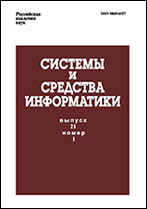|
Post-quantum signature scheme on matrix algebra
D. N. Moldovyan, A. A. Moldovyan, N. A. Moldovyan
St. Petersburg Institute for Informatics and Automation of the Russian Academy of Sciences, St. Petersburg Federal Research Center of the Russian Academy of Sciences, 39, 14th Line V.O., St. Petersburg 199178, Russian Federation
Abstract:
The paper considers the use of a finite multiplicative group of invertible matrices of dimension $2\times2$ set over the field $\mathrm{GF}(p)$ as algebraic carrier of the digital signature schemes based on the computational difficulty of the hidden discrete logarithm problem and satisfying the general criterion of post-quantum resistance. The existence of a sufficiently large number of commutative subgroups with two-dimensional cyclicity is shown. This fact is used in the construction of a specific signature scheme which is of interest as a post-quantum cryptosystem. In the introduced digital signature scheme, a new form of the hidden discrete logarithm problem is applied. The said form is characterized by the use of a commutative group with two-dimensional cyclicity as a hidden group and masking operations of two different types: ($i$) having the property of mutual commutativity with the exponentiation operation and ($ii$) free from this property. To ensure the correct operation of the cryptographic scheme, a special type of verification equation is used in the signature authentication procedure, and when generating a signature, one of the elements of the latter is calculated as a root of quadratic equation.
Keywords:
finite group of matrices, computationally difficult problem, discrete logarithm, digital signature, post-quantum cryptography.
Received: 08.09.2020
Citation:
D. N. Moldovyan, A. A. Moldovyan, N. A. Moldovyan, “Post-quantum signature scheme on matrix algebra”, Sistemy i Sredstva Inform., 31:4 (2021), 38–47
Linking options:
https://www.mathnet.ru/eng/ssi796 https://www.mathnet.ru/eng/ssi/v31/i4/p38
|

| Statistics & downloads: |
| Abstract page: | 136 | | Full-text PDF : | 36 | | References: | 20 |
|




 Contact us:
Contact us: Terms of Use
Terms of Use
 Registration to the website
Registration to the website Logotypes
Logotypes








 Citation in format
Citation in format 